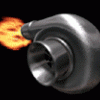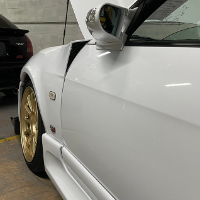Rebuilt Engine Too Tight For Starter Motor
Announcements
-
Similar Content
-
Latest Posts
-
Why are you so adamant on going M12? Why not follow Brad (GTSBoy) suggestion. You're talking moving from a 1/8" size, to a 1/2" effectively. 4 times bigger. Why skip the commonly available sizes in between? The bigger you go, the more likely you are to strip the threads out at a later date, as guaranteed, someone will put a huge spanner on the M12 and really tighten it up, and you're only in thin wall, so not a lot of threads to engage!
-
Hi. Yeah thanks. Car is already at tuners and it staying there to resolve "many" issues they do not like. So it is in a good hands. Getting a good tune on that Nistune ECU too so the car would be good. Just needs a little tune up and love.
-
Probably gonna remove manifold and turbo. I’m not sure if I can get M12 x 1.5 air tight. Could use high temp Loctite 246 or something similar, but I don’t know. Maybe it’s just best to remove everything again and weld an 1/8NPT on there instead.
-
Yeah, saw the ratios, not impressed. Would like the punch I have in the first gears now. With those ratios it won't be the same. Also want the h pattern gearing, or at least a quiet gear set that don't need to come apart for service each year. Looks like the only "reasonable" way Is a 8hp70 transmission, but where is the fun in that🤷♂️
-
Hey mate, really appreciate the help. Have been looking pretty extensively myself and was certain they were retro fitted, but then ended up finding a 4 door with what looks like the same side skirts or at least the closest I’ve seen. The photos from the Offset Kings event at Sunrise 2016. https://fatlace.com/offset-kings-okayama-at-sunrise/
-






Recommended Posts
Create an account or sign in to comment
You need to be a member in order to leave a comment
Create an account
Sign up for a new account in our community. It's easy!
Register a new accountSign in
Already have an account? Sign in here.
Sign In Now